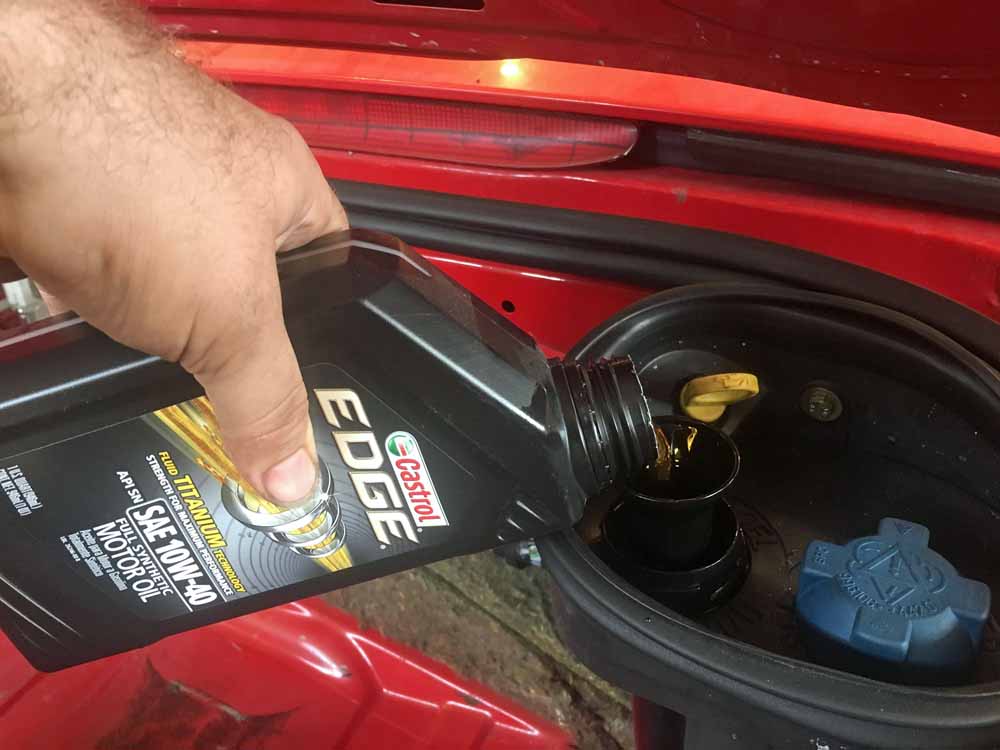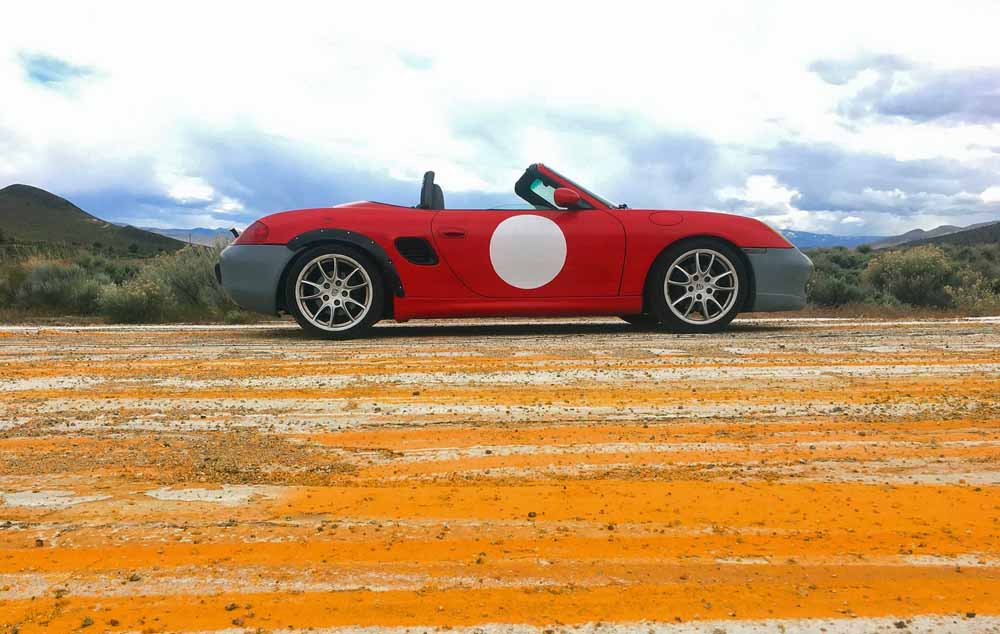
We’ve had “Project Boxster Clubsport” for quite a while now, but it’s been dormant for over a year and it’s time to rectify that. We purchased the Porsche for a song, and have been slowly making some moves to drop the car’s weight and add a little more fun. It’s an excellent Porsche to drive, but it’s in a pretty sorry state right now, and we want to return it to its former fun, and then some. It’s time that this project was dragged out of the shadows and brought back into the light. It’s going to be made better than ever, so lets get started!
Part 2 – GT3-Style Center Console Delete
Part 3 – LED license plate lights
Part 6 – Emblem Delete and Paint Correction
Part 8 – Short Shift Kit Installation
Part 10 – Big Brakes, Spacers, and Wheel Studs
Part 11 – Wheels and Michelins
Part 14 – Interior Door Handle Update
Part 18 – H&R Sport Spring Installation
Part 19 – Adjustable Rear Toe Control Arms
Part 20 – Rear Suspension Braces
Before we get started we would need to thank Michelin. As many of you know, Michelin is a long-time sponsor of FLATSIXES.com. Recently, they have generously offered to sponsor Project Boxster Clubsport as part of their involvement with our site. Please consider checking out what Michelin has to offer by clicking their banners on this page. Without Michelin’s support, and others like them, this site really wouldn’t be possible.
The most recent installment of this car’s progress was posted over a year ago, and the truth is, it’s been far longer than that since the darn thing has been driven very far. We picked up another Porsche project, and have been side tracked with that one since. Project Boxster Clubsport is well past due for some attention, and we’re going to be preparing it for a more hardcore future. This Boxster has served very well as an aggressive street car, taking me on a number of road trips, car events, and gorgeous mountain drives. Over the 15 months or so it’s sat in our garage with no purpose. The first task here is to take stock of the situation, see what it needs, and bring the Porsche back to life and back to the road.
One thing we learned in this car’s long slumber is that small lithium batteries don’t like to sit for long periods. The 2-pound battery we installed in this Boxster back in 2015 finally went flat, and all of our efforts to recondition it to life again have been for naught. We’ll be putting in a larger capacity lithium battery this time, and adding a battery shut-off switch for extended periods of non-use. That will come in handy also as the car reaches its final form as a full-blown track machine. For now, we’ve put a heavy traditional lead-acid battery back in the car just to get it running again.
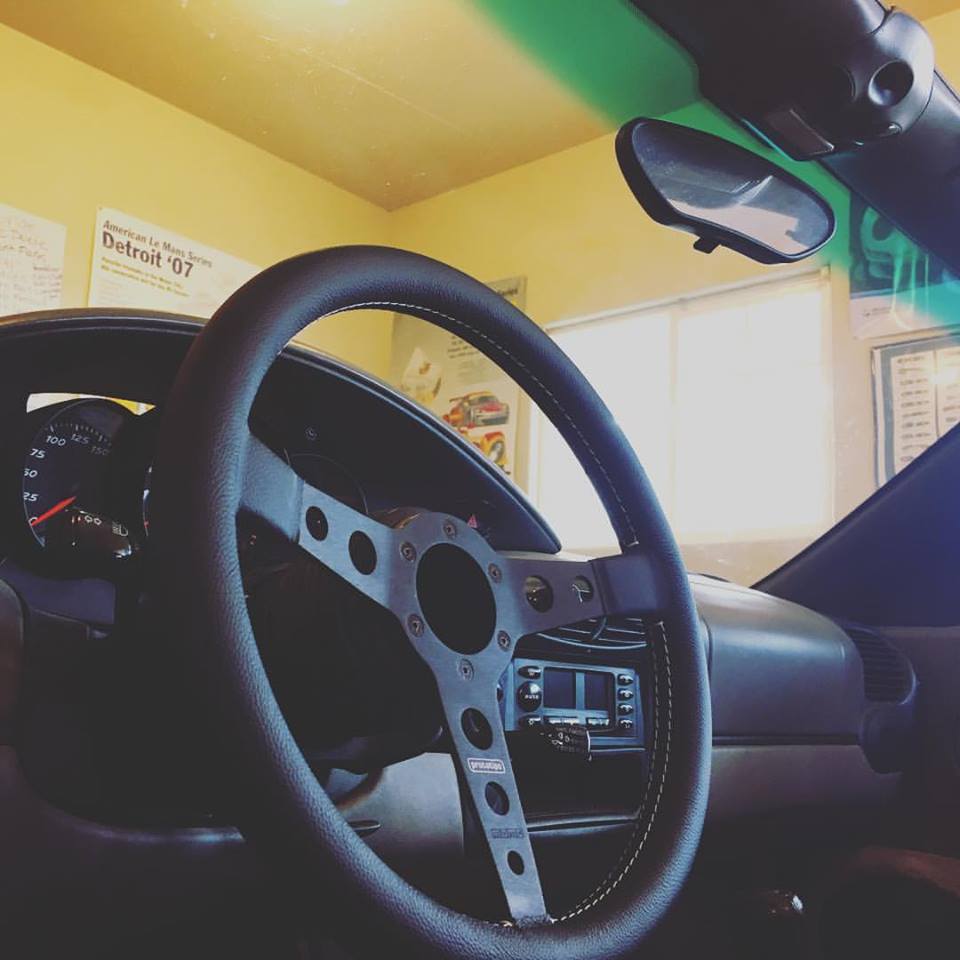
A while back, we stole the car’s Momo Classic steering wheel for that other Porsche, because that wheel looks far better in a vintage car than it does one from the late 1990s. Because we already had the Momo hub for the Boxster, we purchased one of their re-issued Prototipo wheels in black. While the wheel is rooted in the 1960s, it’s a timeless design that looks surprisingly at home in the Boxster. In sticking with the low-weight concept, and due to the fact that it doesn’t work anyway, we removed the car’s horn and therefore there is no need for the center hub horn button. Now the car will start and steer. Progress!
The original red paint on this car has become a faded mess after sitting in the Nevada desert sun for an extended period. We put a cover on the car to keep the elements from getting to the interior, but of course the high winds ravaged the paint. At one point during a heavy thunderstorm, we threw a tarpaulin over the car to keep the serious wet away from the inside (you may remember this car doesn’t have a top any longer), and the bungee cords were whipped into the quarter panel of the car, wearing down into the base coat. It’s nasty, and needs to be addressed.
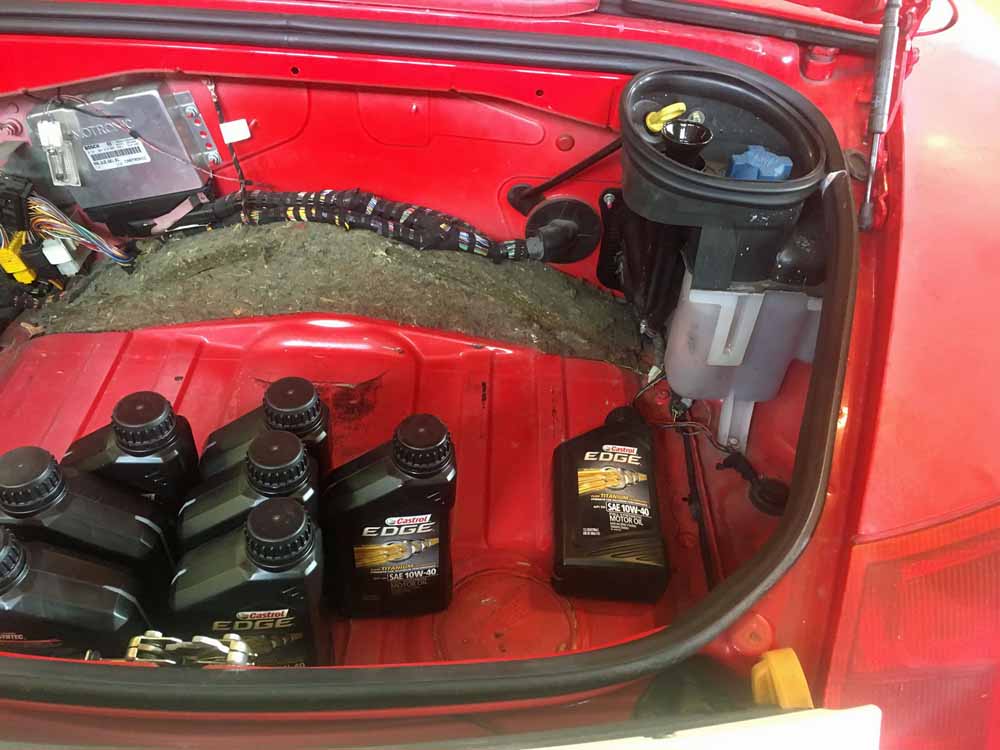
After sitting for a long time, the oil in this engine isn’t doing anyone any good. Before driving it anywhere, it was time to swap that dino juice out for fresh. Castrol’s EDGE is formulated to meet Porsche’s strict guidelines, and comes in the factory-recommended 10W-40 weight needed for the high temperatures this car regularly experiences.
The unfortunate news is that after nearly 120,000 miles on the odometer, the engine is starting to exhibit some signs of wear that are worrying. The magnetic drain plug we installed has pretty much always shown a thin film of ferrous particles on oil change day, but this is a bit more than we’re used to seeing with this car. We don’t recall exactly when the oil was changed last, so it’s possible that the interval was a bit on the long side with this oil change. After sending the photo around to a few Porsche engine specialists, the consensus is that there isn’t much to be done here, and to change the oil often and hope for the best.
The intermediate shaft bearing was replaced a few years ago, and shouldn’t be the issue here. The little 2.5-liter has been rattling a little bit on start up for a while now, and we’re attributing that to sticky timing chain tensioners. It’s possible this metal deposit is a result of a slightly loose chain. We’ve got a set of brand new chain tensioners on the way, and will be taking care of that before trusting the car to drive very far. We’ll be keeping an eye on the metal deposits in future oil changes, and evaluating our options as problems arise. It doesn’t do to dwell on it, right?
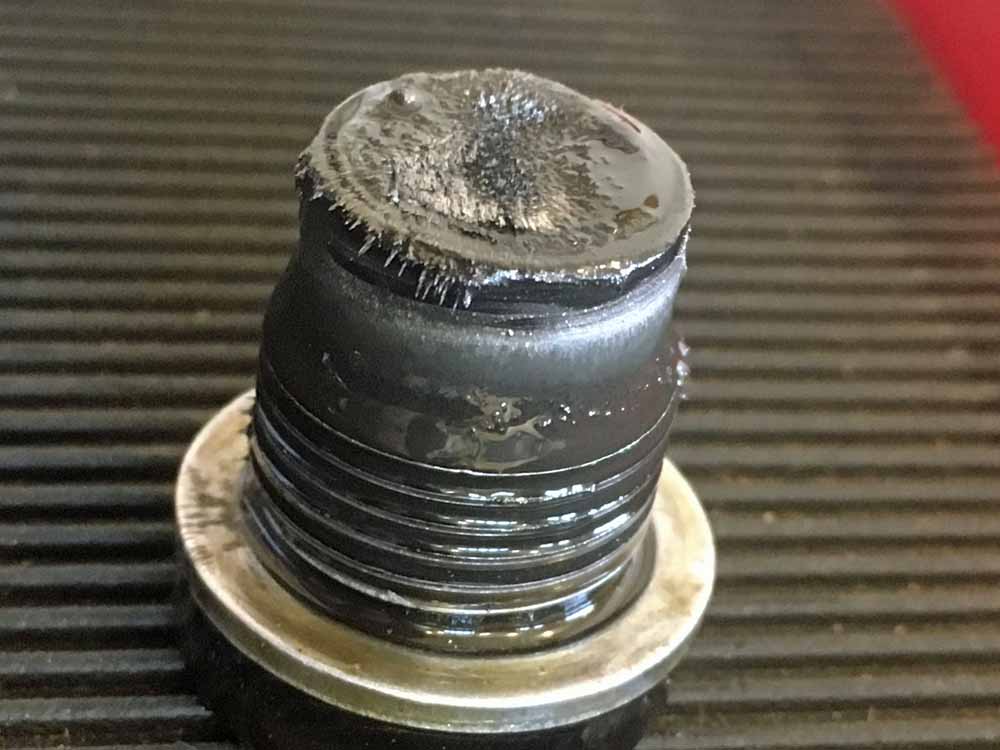
So, there you have it, the Boxster is running again, and it passed emissions tests to get registered again for the first time in over a year. We’ll get a big shipment of parts shortly, including a new set of Michelin tires. We want to take care of our engine, and will be changing out the old Air/Oil separator for a factory fresh piece, as well as those all-important chain tensioners. In order to handle the stresses and heat of lapping days, the Boxster will receive a three-radiator setup that was standard in the 996, adding a center radiator to the mix. We’ll delete the factory AC compressor to free up a few additional horsepower and drop a few dozen pounds in the process.
As for the chassis, first on the list is to get those tires installed, because our old set is used up. Next is a GT3-style brake master cylinder, a modification every mid-engine Porsche track rat recommends vehemently. It’ll also receive a few additional chassis bracing techniques, plus some more weight savings measures, including some radical surprises you’ll have to see to believe. Our Porsche also needs a bit more flow on the exhaust side, mostly because it sounds great and we want it turned up a few percentage points. After all that, it’s getting a proper weld-in custom roll cage for safety purposes. Strap in, because we’re heading to the track.
And of course, you’ll be along for the ride every step of the way!
